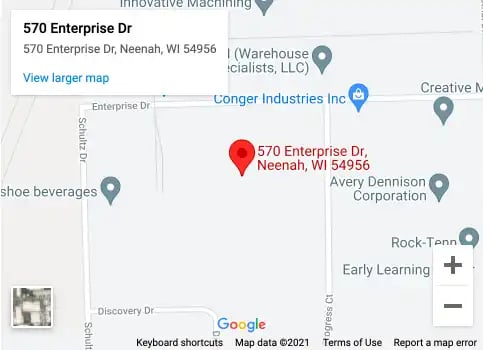Healthcare facilities are tasked with the treatment, care, and healing of millions of people in any given year. Annual hospital admissions in the United States alone totals approximately 36.3 million1 — a staggering number on its own, but made even more so when combined with the estimated 1.4 million people in nursing homes2 and the 812,000 in assisted living facilities.3
The sheer volume of need amplifies the importance of the roles skilled healthcare workers play in the treatment, care, and healing of patients. It also suggests a greater potential for unintentional — and often preventable — events involving patients that put healthcare facilities at substantial risk.
Patient falls and surgical site contamination are two common and expensive occurrences at hospitals and other healthcare facilities. Rectifying the consequences of these events carries a multi-billion-dollar price tag for these institutions. While injury risk exposure can’t be fully negated and the potential for considerable related expenditures zeroed out, both can be minimized when proven patient safety measures are in place.
The Cost of Falls in Hospitals
Categorized as “Never Events” by the Centers for Medicare & Medicaid Safety (CMS), patient falls are deemed clearly identifiable, preventable, and serious in consequences for patients. Yet, anywhere from 700,000 to 1 million patients fall in U.S. hospitals each year.4
Of the patients who fall, between 30-35% sustain an injury4 such as fractures, lacerations, or internal bleeding that could add as many as six days to a hospital stay.5 In total, the cost of falls in hospitals averages $14,056 per patient.5
The Cost of Surgical Site Contamination
Surgical site contamination and surgical site infections (SSIs)—as defined the Centers for Disease Control and Prevention (CDC)—that result from contamination near the surgical incision are considered among the most common preventable post-surgery complications.6
An estimated 2-4% of patients undergoing inpatient surgical procedures contract SSIs.6 Depending on certain patient risk factors, 3% of patients who contract SSIs will die.6 The treatment protocol is dictated by the severity of the SSI, and could include anything from a course of antibiotics to hospital readmission, testing, or other ancillary professional services.7 As such, the per-patient cost of surgical site contamination and managing the resulting SSIs is calculated at anywhere from $400 to $30,000.7 Factor in contamination-related hospital stays that can be lengthened by up to 10 days for additional treatment, and aggregate hospital costs can balloon to $3.5-10 billion annually.8
Preventability Through Patient Safety Measures
Patient falls and surgical site contamination events undoubtedly contribute to the risks and responsibilities assumed by hospitals and other healthcare facilities. However, they also share another commonality: they are largely preventable.
Research backs the claim. According to the Agency for Healthcare Research and Quality, close to 33% of falls can be prevented.9 Similarly, the Institute for Healthcare Improvement estimates that 40-60% of surgical site contamination-related events are preventable.10
The key to preventability is the appropriate selection and use of patient safety measures. In addition to processes and training, focused consideration must be given to the products chosen to support caregivers and protect patients when patient falls and surgical site contamination present the greatest risk. Facility-wide prevention program implementation and compliance demand it; spiraling costs to hospitals and other healthcare facilities in the aftermath of a patient fall or surgical site contamination event warrant it.
TIDI Products has a history of providing healthcare professionals with forward-looking solutions that help reduce the risk of both patient falls and contamination risks, and deliver the highest quality patient care. Our product portfolio includes trusted brands like Posey® patient safety falls management products and Sterile-Z® and C-Armor® drapes, backed by unparalleled service and education.
Contact the TIDI tea to learn about which TIDI solutions align with and improve your patient safety measures. Click the button below to get started!

SOURCES:
1American Hospital Association, Fast Facts on US Hospitals, 2021 | AHA, Undated
2Nursing Home Abuse Center, Facts and Statistics About U.S. Nursing Homes, Undated
3AHCA NCAL, Assisted Living - Facts & Figures, Undated
4MarketScale, How Much Do Patient Falls Cost in Your Medical Facility?, October 15, 2020
5Joint Commission Center for Transforming Healthcare, Preventing Falls | Center for Transforming Healthcare, Undated
6Patient Safety Network, Surgical Site Infections | PSNet, September 2019
7Research Gate, Cost Analysis of Surgical Site Infections, Undated
8Wound Source, Preventing Surgical Site Infections: Tips for Health Care Professionals and Patients, September 27, 2019
9Agency for Healthcare Research and Quality, Preventing Falls in Hospitals, Undated
10Institute for Healthcare Improvement, Changes to Prevent Surgical Site Infection, Undated








